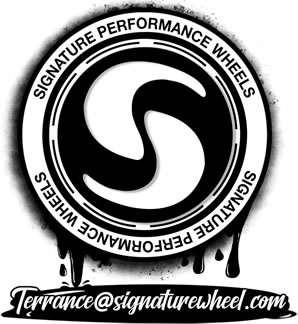MeGoFast
Active Member
Hey everybody, so a little backstory, I've had lots of cars, not a braggy thing, just over the years I've wanted to experience lots of them, I'm a single guy in IT, so I've been fortunate to own some cool ones since I was younger. 2 Turbo'd 94 MR2s, a 98 Integra Type R #361 in Championship White, 2 2nd gen CTS-V manual sedans, some trucks, a super nice cabin cruiser yacht (Widebody Challenger) and some other stuff, like G35 6MTs, a turbo'd 99 Civic Si (yes in that blue) making 400 ish horsepower, 8 or 9 bikes. Anyway, super fun stuff. Back in high school, I had a 71 Beetle, the only way to make it cool was to mess with the stereo and install/play with stuff. This got me into that whole world, I started working for some install spots. Of course Best Buy back in the day, Circuit City, Hifi Buys and a custom shop in Charlotte, NC. So naturally I always did some kind of install on whatever I was driving. I was pretty nervous about doing it on the 5V, but it's nothing that can't be undone, so I gave it a try. Here's how it went. (Also, stand by because I found a non-cutting way to disable the fake in-car audio, gonna test that too).
First, my go-to is to make it sleek, stealthy if possible and minimize the space it takes up. So I always look in the tire well first. Plus, if it's integrated into the vehicle, less to move around, less materials, looks a little cooler, etc.
So I started by measuring the tire well and realizing depth would be a problem. Shopped a little bit and knew I'd have to go with a shallow mounted sub (my first time using one, so I wasn't too sure about quality). My roots are in JL Audio W0s and W6s and MTX Thunder amps, so I started shopping there, settled on a JL 12TW1 2 Ohm shallow mount sub and the MTX JH 5001 375 x 1 @ 2 Ohm, so right in the sweet spot.
Step 1 was to measure what I was working with. I had length, some width and not much height.
Sub is 4.61" deep and requires about .65 cubic feet for operation
Building with 3/4" wood (I usually try to find birch for its cut quality and density.
I knew my height on the box was to be about 4". So my length and width needed to shift.
Max width (front to back ended up being 15". Sides I ran to 16.5 to cover the 3/4" thickness of the wood (that's what she said)
So I bumped the depth by an inch to 5".
Final Measurements are 15 long x16.5 wide (makes the box internally 15x15) and a 5" depth. Divided by 1728 for cubic feet =.651 cubic feet.
(15x15x5 = 1125 internal cubic inches)
(1125 cubic inches / 1728 cubic inches in a cubic foot = .651)
So now the fun stuff, cut the forms. Also it's helpful if you have crazy angles, while you're at Home Depot, pick up a non heavy duty moving box. Great for cutting forms out and making odd shapes work, you can prefab on cardboard.

Next, cut the lid. And since I knew I was going to do a cover panel and didn't want cover panel screws to puncture the enclosed airspace and didn't want the gaps on the left/right to be flimsy under 1/4" cover panel, I extended the lid to 20" or so I think. I measured and centered it, just don't recall the size off the top.

Next, cut the sub hole to make sure the depth was good to go before I secured everything. You can see my centering mark below the sub that lines up with the trunk latch.

At this point the carpet showed up. As info, I guessed on this, but I was right. Just buy regular BLACK carpet from crutchfield. It looks gray in some light, etc. But the black is a perfect match (ish).

Next, I went ahead and assembled the 4 sides with 1 3/4" drywall screws. If you want to use longer screws you can, I'd recommend predrilling and/or buy a bar of soap and run the screw threads along the bar of soap. Helps them penetrate/seat deeper/easier. Then caulked up the 4 sides of the enclosure and drilled/sealed my speaker wire hole, knowing everything was to run on the same side of the car. Mounted the box in with 2" L brackets, self tapping 1/2" screws to the bottom of the car and just wood screws in the other pieces. I don't have a good pic of this, but you'll see it after the first layer of fiberglass. Then just cut and layed in the first layer of fiberglass.

****WEAR A RESPIRATOR FOR THIS AND OPEN DOORS****
Next, I mixed the resin and hardener and painted it onto the fiberglass layer, making sure to brush up towards the lid/top to make sure I'd get a good seal. Just make sure it's got coverage. Then leave the doors open and I put a fan on it to help it dry, but it sets up better if you have some kind of a heat lamp. I did this on a kind of cold rainy saturday, but if you can do it around 80 degrees it will set up nice.

I only did 1 layer on this because it set up nicely and looked really solid after one pass. Here it is dry, and you can see the mounts I used to secure the enclosure

Then, since I'm only carpeting a cover panel, if the cover panel isn't perfect, I spray paint around the sub opening, so it's not obvious if there's an odd gap in carpet. Paint will hide it enough for most peoples eyes.
After this, put a layer of caulk around the edges of the enclosure and center/fit your lid, then screw it down using 1 3/4" drywall screws. Clean up the caulk that overflows the edges inside/outside so it's smooth and sealed and let that dry.

Ok, this looks pretty fugly, I agree. But hang in there lol. Next I mounted the amp. I was going to flush mount this too, but everything was running so shallow and tight to the car I looked upward and decided to mount it in on the roof of the trunk. There's about 1.5" clearance in most places and a fabric between the deck lid, so I used 3/4" self tappers and it's secure, no danger in any screws coming through the deck lid. Side note, I did tape around the edge of the hole those wires run through (power/ground). Also, for signal input, I unplugged the rear left speaker, cut the harness and wire both left and right channels into the left/right of this line out converter. Then just made sure those connections were tight, taped everything up and reconnected the speaker. I always have 4 gauge wire, so I installed the required 60 amp fuse, 4 gauge wire and was almost done.
Side note, battery is under the left side of the trunk there, so I removed a nut from one of the empty terminals they have, used some 4 gauge ring terminals and set that up. New amps also have signal identification, so there's not usually a need to run a switched power wire (check your amp first for this functionality). So then I just sanded a small 1x1" portion of the trunk and screwed it down. You can see my ground in the picture above, just off the top left side of the enclosure lid. The lid height over trunk floor protects it.
4 Gauge Ring Terminals with Heat Shrink: LINK
Converter for High to Low level inputs: LINK

Next, I tested everything, it all worked first try, so it was time to make it pretty. I knew the cover panel would be 2 pieces, so I went wide with the first piece and figure it would hinge further back in the trunk. Not a big deal, if the carpet doesn't secure it you can come back later and add some kind of a metal brace, but it's 1/4" wood, so I didn't want to rip it up too much.
Used cardboard and the factory trunk mat to get angles drawn on the wood, then was off to cutting. This sub has an odd shape, 4 flat sides, 4 rounded sides so I had to guess at my cover panel hole. I did OK on that, the left edge needs a fix, so I'm going to recut the whole thing some day soon. So this is a process of draw, test, fit, draw, test, fit, etc.

First, my go-to is to make it sleek, stealthy if possible and minimize the space it takes up. So I always look in the tire well first. Plus, if it's integrated into the vehicle, less to move around, less materials, looks a little cooler, etc.
So I started by measuring the tire well and realizing depth would be a problem. Shopped a little bit and knew I'd have to go with a shallow mounted sub (my first time using one, so I wasn't too sure about quality). My roots are in JL Audio W0s and W6s and MTX Thunder amps, so I started shopping there, settled on a JL 12TW1 2 Ohm shallow mount sub and the MTX JH 5001 375 x 1 @ 2 Ohm, so right in the sweet spot.
Step 1 was to measure what I was working with. I had length, some width and not much height.
Sub is 4.61" deep and requires about .65 cubic feet for operation
Building with 3/4" wood (I usually try to find birch for its cut quality and density.
I knew my height on the box was to be about 4". So my length and width needed to shift.
Max width (front to back ended up being 15". Sides I ran to 16.5 to cover the 3/4" thickness of the wood (that's what she said)
So I bumped the depth by an inch to 5".
Final Measurements are 15 long x16.5 wide (makes the box internally 15x15) and a 5" depth. Divided by 1728 for cubic feet =.651 cubic feet.
(15x15x5 = 1125 internal cubic inches)
(1125 cubic inches / 1728 cubic inches in a cubic foot = .651)
So now the fun stuff, cut the forms. Also it's helpful if you have crazy angles, while you're at Home Depot, pick up a non heavy duty moving box. Great for cutting forms out and making odd shapes work, you can prefab on cardboard.
Next, cut the lid. And since I knew I was going to do a cover panel and didn't want cover panel screws to puncture the enclosed airspace and didn't want the gaps on the left/right to be flimsy under 1/4" cover panel, I extended the lid to 20" or so I think. I measured and centered it, just don't recall the size off the top.
Next, cut the sub hole to make sure the depth was good to go before I secured everything. You can see my centering mark below the sub that lines up with the trunk latch.
At this point the carpet showed up. As info, I guessed on this, but I was right. Just buy regular BLACK carpet from crutchfield. It looks gray in some light, etc. But the black is a perfect match (ish).
Next, I went ahead and assembled the 4 sides with 1 3/4" drywall screws. If you want to use longer screws you can, I'd recommend predrilling and/or buy a bar of soap and run the screw threads along the bar of soap. Helps them penetrate/seat deeper/easier. Then caulked up the 4 sides of the enclosure and drilled/sealed my speaker wire hole, knowing everything was to run on the same side of the car. Mounted the box in with 2" L brackets, self tapping 1/2" screws to the bottom of the car and just wood screws in the other pieces. I don't have a good pic of this, but you'll see it after the first layer of fiberglass. Then just cut and layed in the first layer of fiberglass.
****WEAR A RESPIRATOR FOR THIS AND OPEN DOORS****
Next, I mixed the resin and hardener and painted it onto the fiberglass layer, making sure to brush up towards the lid/top to make sure I'd get a good seal. Just make sure it's got coverage. Then leave the doors open and I put a fan on it to help it dry, but it sets up better if you have some kind of a heat lamp. I did this on a kind of cold rainy saturday, but if you can do it around 80 degrees it will set up nice.
I only did 1 layer on this because it set up nicely and looked really solid after one pass. Here it is dry, and you can see the mounts I used to secure the enclosure
Then, since I'm only carpeting a cover panel, if the cover panel isn't perfect, I spray paint around the sub opening, so it's not obvious if there's an odd gap in carpet. Paint will hide it enough for most peoples eyes.
After this, put a layer of caulk around the edges of the enclosure and center/fit your lid, then screw it down using 1 3/4" drywall screws. Clean up the caulk that overflows the edges inside/outside so it's smooth and sealed and let that dry.
Ok, this looks pretty fugly, I agree. But hang in there lol. Next I mounted the amp. I was going to flush mount this too, but everything was running so shallow and tight to the car I looked upward and decided to mount it in on the roof of the trunk. There's about 1.5" clearance in most places and a fabric between the deck lid, so I used 3/4" self tappers and it's secure, no danger in any screws coming through the deck lid. Side note, I did tape around the edge of the hole those wires run through (power/ground). Also, for signal input, I unplugged the rear left speaker, cut the harness and wire both left and right channels into the left/right of this line out converter. Then just made sure those connections were tight, taped everything up and reconnected the speaker. I always have 4 gauge wire, so I installed the required 60 amp fuse, 4 gauge wire and was almost done.
Side note, battery is under the left side of the trunk there, so I removed a nut from one of the empty terminals they have, used some 4 gauge ring terminals and set that up. New amps also have signal identification, so there's not usually a need to run a switched power wire (check your amp first for this functionality). So then I just sanded a small 1x1" portion of the trunk and screwed it down. You can see my ground in the picture above, just off the top left side of the enclosure lid. The lid height over trunk floor protects it.
4 Gauge Ring Terminals with Heat Shrink: LINK
Converter for High to Low level inputs: LINK
Next, I tested everything, it all worked first try, so it was time to make it pretty. I knew the cover panel would be 2 pieces, so I went wide with the first piece and figure it would hinge further back in the trunk. Not a big deal, if the carpet doesn't secure it you can come back later and add some kind of a metal brace, but it's 1/4" wood, so I didn't want to rip it up too much.
Used cardboard and the factory trunk mat to get angles drawn on the wood, then was off to cutting. This sub has an odd shape, 4 flat sides, 4 rounded sides so I had to guess at my cover panel hole. I did OK on that, the left edge needs a fix, so I'm going to recut the whole thing some day soon. So this is a process of draw, test, fit, draw, test, fit, etc.
Last edited:




